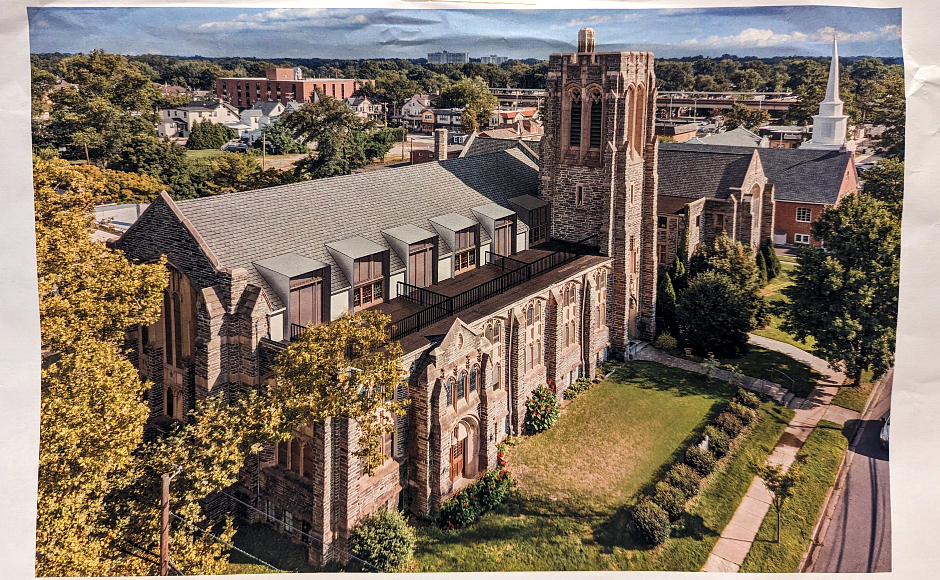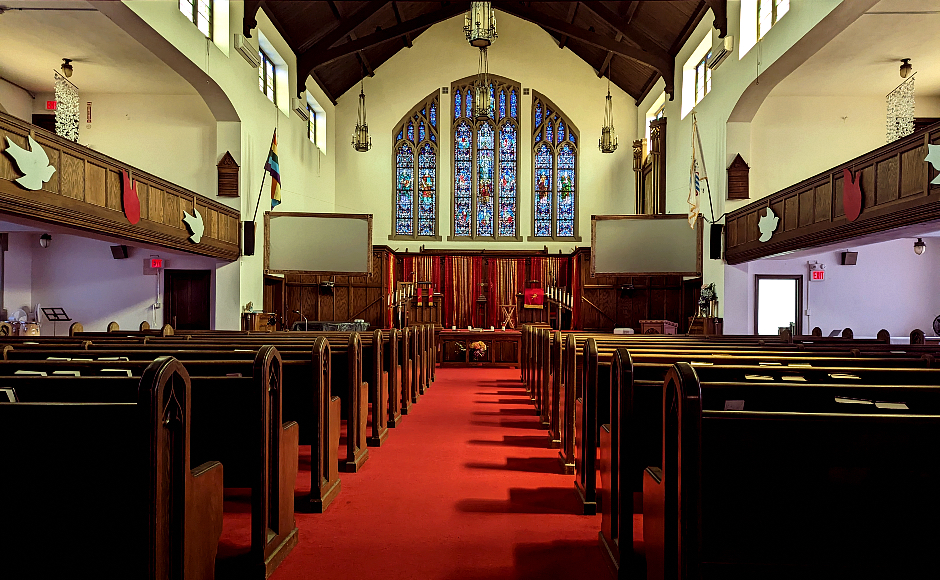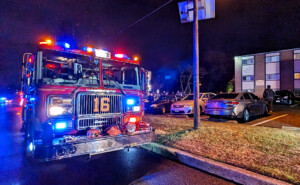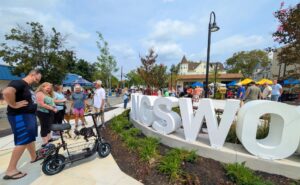The property at 30 Fern Avenue will be transformed into a 26-unit apartment building with design touches that preserve its historic character.
By Matt Skoufalos | May 15, 2023
Almost a year after Collingswood Presbyterian Church hosted its final worship services at 30 Fern Avenue, the address that had been its home since 1917, the borough land use board approved a plan to convert the property into an apartment building.
Spring Hill Services plans to move forward with the construction of 26 total units within the 40,000-square-feet building: 12 one-bedroom and 14 two-bedroom units, with an estimated four affordable units included in that calculus.
Max Polichuk of the Philadelphia-based property management company said Spring Hill is growing its New Jersey business with projects in Winslow and Collingswood, and already has a converted church housing project to its name (2001 Spring Garden Street, in the Fairmount section of Philadelphia).
“Not everybody knows how to deal with structural masonry on the outside,” Polichuk said. “It’s a very old building, so you have to take care with how you build it out.”
One-bedroom units will range from about 800 to 1,000 square-feet, and two-bedroom units will span about 1,200 to 1,600 square-feet. Rents are yet to be determined, Polichuk said.
Onsite parking will total 33 spaces, including EV infrastructure; the church also is situated in a walkable context, a short distance from the Collingswood PATCO Speedline station.
The name for the housing development has yet to be determined, and the developer is in negotiations with the borough for a PILOT agreement, which has not yet been finalized, Polichuk said.
Spring Hill acquired the property for $1.5 million.
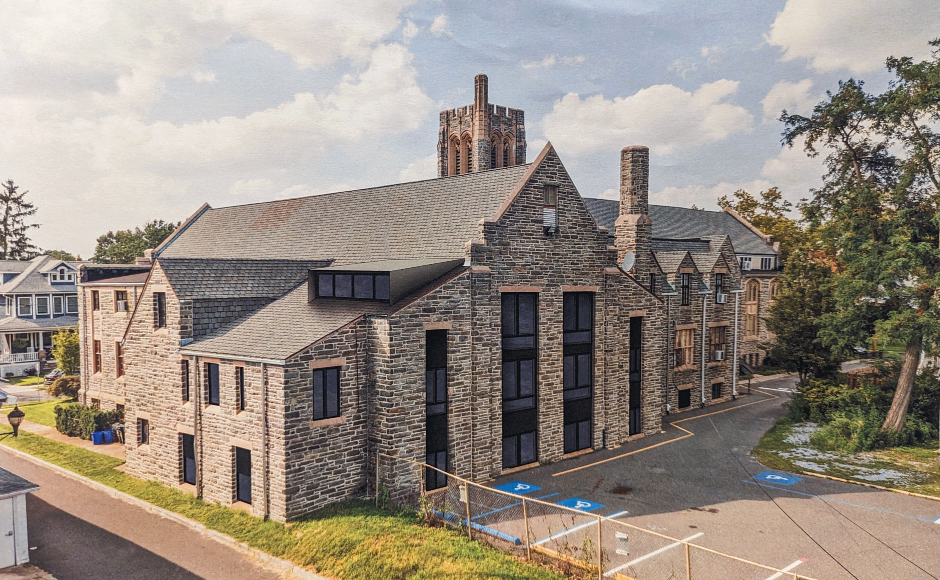
Collingswood Presbyterian Church redevelopment rendering. Credit: Harman Deutsch Ohler Architecture.
Preserving historic character in a contemporary context
In designing the space, Eric Quick, Associate Principal and Director of Design at Harman Deutsch Ohler Architecture, said his foremost objective was preserving as much of the historic architecture of the church as possible.
“In general, our goal is to not modify the exterior of the building in any significant way,” Quick said.
“We do have to open up some areas to provide natural light.”
Design concessions to the space involved adding a third floor to the building to make use of the 28-feet-high ceilings within the main sanctuary of the church. The architects also added dormers to that third level and lowered the windowsills in the rear of the building, which has an elevated first floor, to align with “the typical first floor,” Quick said.
“We kept the interventions to the exterior sleek, modern, and unobtrusive,” he said. “The dormers are modern, squared off, with flat roofs, that minimize its presence.
“The majority is fully glazed, serving its function to provide natural light into the space,” Quick said. “We’re preserving original window openings, and getting custom windows made to fit the existing stone openings.”
Inside the building, the architects were able to preserve the existing stained glass windows, and develop them as a focal point of the interior. Units facing the end windows of the sanctuary “will have full access to the stained glass windows,” Quick said, with most of them in the master bedroom suites.
“We tried to identify the best attributes of the existing building, and then preserve those,” he said, like the millwork and paneling in what will become the residential lobby.
Other mechanical upgrades to the space will include running new heating, ventilation, and air conditioning (HVAC), electrical service, plumbing, and energy-compliant windows where possible. Many of the units will be large enough to accommodate designated dining areas, and spacious bedrooms with closets, Quick said.
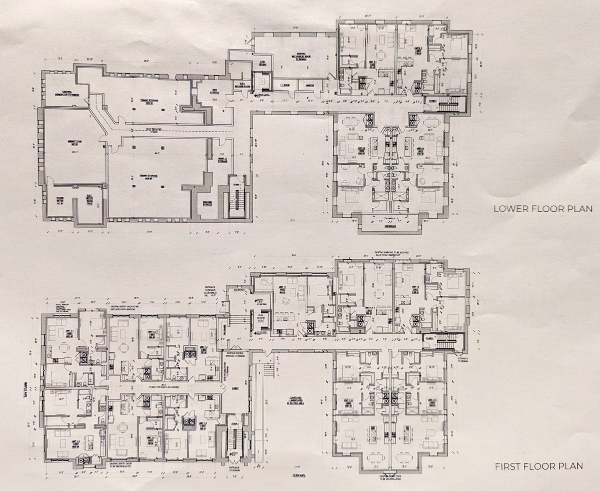
First and Lower Floor Plan – Collingswood Presbyterian Church redevelopment. Credit: Harman Deutsch Ohler Architecture.
“A typical developer may want to tear down a building like this,” Quick said. “It takes a lot of effort and it’s more expensive to do an adaptive reuse, but we know this building has character, and is beloved by the community, so we wanted to preserve it.
“It’s definitely a more challenging problem to work through,” he said. “There’s a lot of churches closing, and a lot of them get knocked down. It’s nice that we get to preserve a really pretty one.”
With conditional approvals in hand, the project could be underway by the end of the summer and completed within a year to a year-and-a-half.
The developers sought no variances, but were granted design waivers for the height of the onsite trash enclosure (which increased the surrounding fencing to six feet) and a shortfall in trees planted (the ordinance required more trees per dwelling unit than the site could accommodate).
The application passed by a vote of 5-0.


